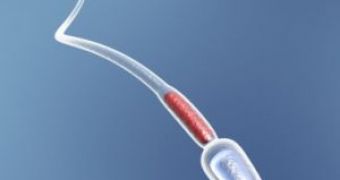We all know that those little wanton devils called sperm cells effectuate the fecundation of the egg.
But American researchers have found how to cut its energy supply.
The team from the University of Virginia Health System report the finding of a new protein, named sperm flagellar energy carrier (SFEC) and located within a sperm's tail, which enables sperm cells to move.
"There's considerable interest in developing new male contraceptives," said Dr. John Herr, who heads UVa's Center for Research in Contraceptive and Reproductive Health.
"To support this effort, our team has been searching for proteins that might serve as target sites for small-molecule drugs."
SFEC is the fourth in a family of proteins implied in storing and use of energy.
These proteins have the role of binding and exchanging energy-carrying molecules (ATP when loaded with energy and ADP, when deloaded).
SFEC is very interesting because of its location and its peculiar way of acting.
"One approach to male contraception is to disable sperm from swimming, and we think SFEC may be able to play a role in that process," Herr noted.
The three previously identified ATP/ADP carrier proteins reside in cell organelles called mitochondria, located in the midpiece of the sperm cell (the middle region) while SFEC is located in the distal part of the sperm tail (flagella).
SFEC has also extensions at both ends of its amino acid sequence, while the other ATP/ADP carriers do not have these extensions.
This may explain why SFEC is able to perform its function in the distal sperm tail.
"The distal sperm tail does not have mitochondria, which means that SFEC operates in a different environment than the other ATP/ADP carriers," explained Dr. Young-Hwan Kim, the SFEC's discoverer.
"While mitochondria generate energy through an oxidative process, recent research indicates that the sperm flagella mainly produces and consumes energy through a process called glycolysis."
"This is the first time that such an ATP carrier protein has been linked to glycolysis," he said.
"In experiments where glycolysis was blocked, the sperm barely quivered, showed no progressive motion and were infertile."
Experiments that targeted the oxidative processes in the sperm's mitochondria failed to impede sperm cells to keep on swimming and fertilizing eggs.
"Because they will aim at specific proteins like SFEC and target a unique sub-domain on the protein's surface, future male contraceptive drugs will be known as intelligent spermicides," Herr explained.
"At UVa, we've coined a great name for this new drug class, spermistatic."

 14 DAY TRIAL //
14 DAY TRIAL //